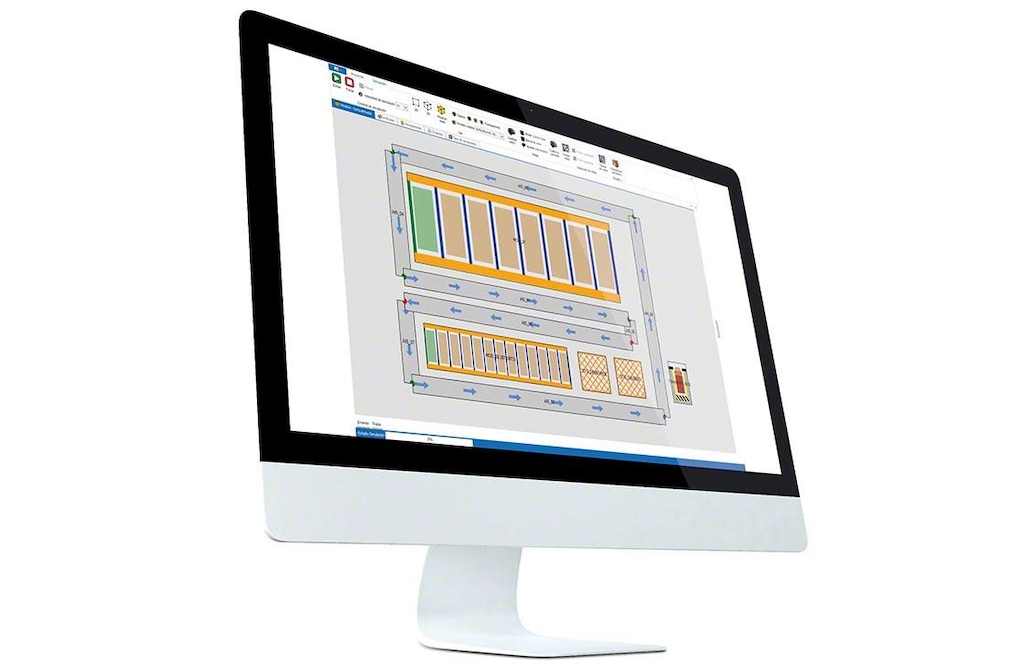Key Performance Indicators or KPIs are one of the most commonly used metrics in companies today, as they objectively measure production process performance. As such, these indicators make it possible to compare performance over time and to see how it has progressed to identify opportunities for improvement. But why is it so essential to measure warehouse KPIs and what systems can I use to do it?
What role does warehouse KPIs play?
Measuring in-warehouse KPIs is an important first step in controlling and optimising processes. If something can’t be measured, it can’t be understood nor improved.
Warehouse KPIs are good to:
- Control the evolution of a given process in a specific time.
- Analyse if set objectives and standards are being met.
- Make decisions based on ongoing data capture. Measuring for measuring's sake is a no-no.
Key performance indicators in the warehouse are usually represented as a percentage, ratio or value and refer to a specific time period.
Selecting KPIs in your warehouse based on performance targets
A warehouse must fulfil some basic goals as an essential link in the supply chain: reducing costs, optimising time, improving productivity (producing more with fewer resources) and guaranteeing process quality.
On that basis, four groups of KPIs are relevant according to the targets they measure:
- Financial indicators: control a storage installation’s operational costs. For example, issues related to inventory valuation, space used, or stock rotation.
- Productivity KPIs: deal with assessing process efficiency, i.e. they measure the real production vs the resources used for that operation. For example, the productivity of warehouse inputs in terms of the labour costs or handling equipment productivity by the number of unit loads handled.
- Time-related key indicators: as already mentioned, time is money in logistics and this motto has never been truer than in a warehouse. Some examples of this KPI type in a warehouse are the percentage of deadlines met on time or the response time in goods receipt.
- KPI linked to quality: control the level of service being given to the customer. For example, the percentage of orders served on time, orders with errors or damaged stock, among others.

A PC installed with a WMS to correctly manage and measure a warehouse’s KPIs.
The WMS, a key tool for controlling warehouse KPI
Data reliability is fundamental to making key performance indicators useful and accurate. A WMS, such as the Easy WMS, automates information management and helps control the main in-warehouse KPIs:
- A WMS provides you with real-time information on inventory: what stock is available, where it comes from, where it is located, and the logged movements.
- Sub-processes can be analysed in minute detail to detect inaccuracies in a highly precise manner: for example, in a crucial operation such as order picking and fulfilment, the WMS organises and measures assigned tasks and times to improve speed and accuracy.
- Furnish precise data on your team: besides distributing tasks evenly, using the Labor Management System module, the WMS sets goals for your staff and measures their performance.
- Through the Supply Chain Analytics module, the WMS simplifies making detailed reports using the main KPIs in a warehouse. Also, they can be tailored according to the specific operations taking place in your installation.
- You can integrate the warehouse KPIs logged by your WMS with all other logistics indicators through the unique Supply Chain Visibility metrics module, which functions as a real-time barometer for the entire supply chain.
Measuring the KPIs of a warehouse determines whether the proposed targets are being met so that, with these data, action plans can be devised and logistics processes optimised.
Having the help of specialised warehouse management software, such as the Easy WMS, certainly makes this task easier. However, if you need more information on how to measure your warehouse or supply chain KPI with Mecalux systems, get in touch and we’ll help you find the most suitable solution to manage your company's logistics.
